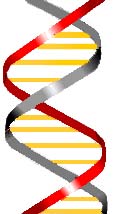|
The human genome project is an internationally recognized program designed
to ultimately create a detailed map of the human genome. This mapping
of DNA will involve decoding the nucleotide sequence of approximately 100,000
genes within the 23 human chromosome pairs. A genome is a collection
of the entire DNA in an organism. The different sequences created
from the four nucleotide bases, A, G, C, and T, make up the different genes
on a chromosome. The human
genome is said to have over 3 billion pairs of bases. For the
Human Genome Project to succeed all of these bases must be decoded.
DNA variations between different societies and individuals will lead to
new procedures and research. |
